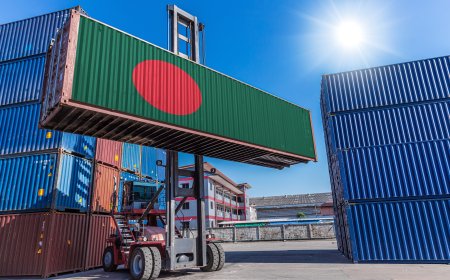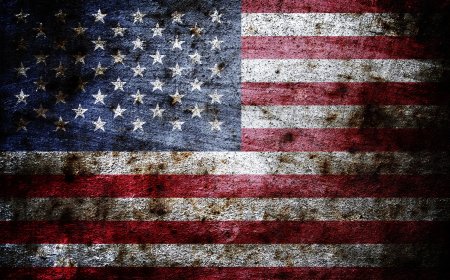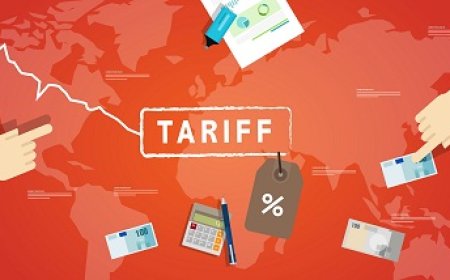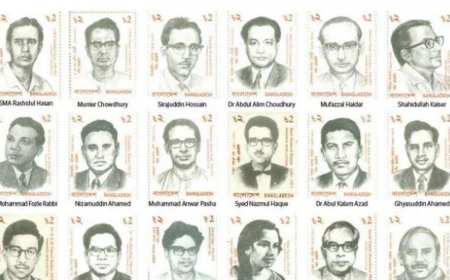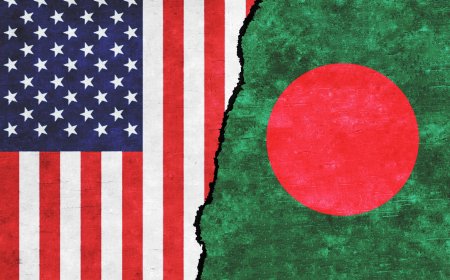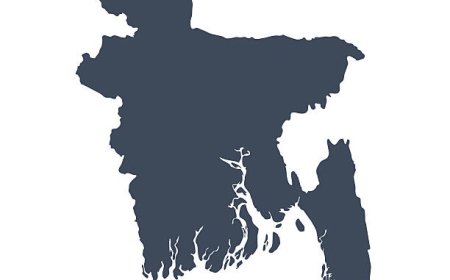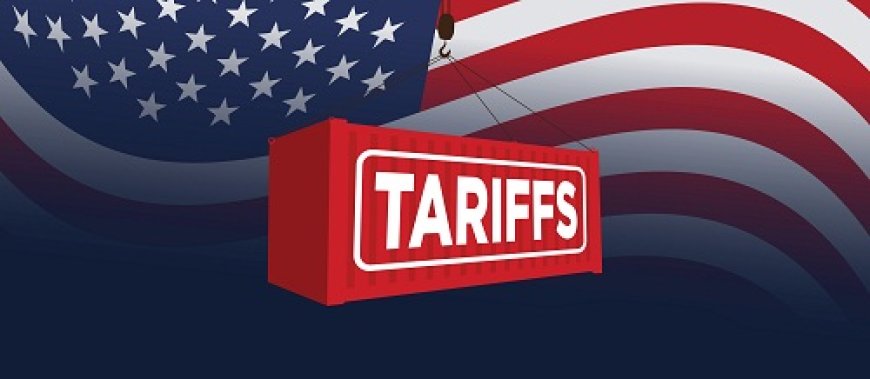Tariff Relief or Strategic Trade-Off?
20% is better than 35, but there is still a lot of work that needs to be done if Bangladesh wishes to remain competitive in the global marketplace
In the third round of negotiations between the United States and Bangladesh, a decision was reached that many are celebrating as a diplomatic success: the reduction of an additional tariff from 35 percent to 20 percent on Bangladeshi goods entering the US market.
This development, welcomed by the interim government and endorsed by segments of the business community, especially the ready-made garments (RMG) sector, is already being hailed as a turning point for trade relations.
Yet, beneath this apparent success lies a matrix of opaque diplomacy, strategic ambiguity, and long-term economic consequences that warrant closer scrutiny.
To assess whether this is indeed a “victory” or a veiled compromise, one must begin by interrogating the fundamental terms of this engagement. What did Bangladesh truly concede to achieve this marginal relief? And can a 15-percentage-point reduction in punitive tariffs be considered a triumph if the country’s trade exposure, structural inefficiencies, and supply-side weaknesses remain unaddressed?
Bangladesh’s annual export to the US, particularly dominated by the RMG sector, was already subject to an average 15 percent tariff. The announcement by the previous US administration to add a 35 percent countervailing duty had threatened to push that figure to an unsustainable 50 percent -- an existential threat to an industry that accounts for over 80 percent of Bangladesh’s export earnings. From that precipice, a reduction to a total 35 percent -- while still burdensome -- is being portrayed as an act of salvation.
But is it really a rescue if the house was set ablaze in the first place only to offer a smaller fire? The logical error lies in comparing a potentially ruinous scenario with a slightly less catastrophic one and calling the latter a success.
From a strategic perspective, this reduction is not a gift; it is a calibrated recalibration by the US, reflecting not benevolence but a complex interplay of trade leverage and geopolitical orchestration. The central question is not what we gained, but what we gave up.
The trade deficit argument, often paraded by American policymakers, is only part of the story. Tariffs, particularly sudden and politically motivated ones, have historically been tools of coercion more than protection. Under the guise of balancing trade asymmetries, the US has nudged developing countries into compliance with its broader strategic interests -- whether in defense procurement, foreign investment access, or alignment with Indo-Pacific geopolitical postures. Bangladesh, despite being a relatively modest trade partner, is no exception.
Reports suggest that, in return for this tariff reduction, Bangladesh has agreed to scale up its imports from the US, including wheat, cotton, and notably, the purchase of 25 Boeing aircraft -- a staggering commitment for an economy still grappling with debt obligations, energy crises, and fiscal deficits. More worryingly, while the government has neither confirmed nor denied, there are whispers of a security conditionality attached: a gradual distancing from Chinese military imports in favor of US hardware. If true, this signals a significant strategic pivot that will reverberate beyond trade.
One must also consider the secrecy that has enshrouded these negotiations. The interim government has defended its silence on the grounds of diplomatic sensitivity. But secrecy in trade and foreign policy -- when it impacts national economic direction -- breeds mistrust and raises alarms. This opacity denies stakeholders, especially the private sector, the information they need to strategize long-term investment, pricing, and sourcing decisions. In a democracy, even an interim administration bears the moral responsibility to communicate the contours of major international agreements. Otherwise, it opens itself to accusations of secretive deal-making and short-termism.
The tariff relief, though certainly a better outcome than the initial threat, remains deeply problematic on implementation grounds as well. Will producers absorb the additional costs? Will buyers adjust their margins to accommodate the duty? Or will the end consumer bear the price? These questions are more than theoretical. Bangladesh’s garment exporters operate on wafer-thin margins. A total 35 percent tariff still places the country at a comparative disadvantage in the US market vis-à-vis countries that enjoy preferential trade deals or higher domestic efficiency.
Pakistan, with a 19 percent tariff, lacks the scale to displace Bangladesh, but Vietnam and Indonesia remain agile competitors. The truth is, a few percentage points in tariffs, though important, are not the sole determinant of trade flow. Logistics, compliance, labor reputation, energy supply, and political stability play an equal, if not more decisive, role.
And it is precisely here that Bangladesh’s fragility is most pronounced. The country’s industrial base, though resilient, is not robust. Power outages, gas shortages, congested ports, and inefficient customs processes continue to plague exporters. Any gain made through tariff negotiations can be nullified if goods remain stranded at ports, if containers wait for energy to run factories, or if labor unrest disrupts production cycles.
Moreover, the specter of Bangladesh’s international image as a low-wage, labor-abusing economy continues to haunt its branding in Western markets. Ethical consumerism in Europe and North America has turned increasingly vocal. Tariff relief, without reputational reform, is merely a temporary balm.
The case of the transshipment tariff is another matter of concern. With many Bangladeshi goods dependent on raw material imports from China, the US imposition of a 35 to 40 percent transshipment tariff for Chinese-origin components effectively closes a crucial supply loop.
This will particularly hit medium-sized firms that lack backward linkages or the capital to invest in domestic substitutes. For an economy heavily reliant on global value chains, such barriers could erode Bangladesh’s competitiveness and hurt SMEs more than conglomerates.
This brings us to the moral hazard of becoming too comfortable with concessions. If the trade narrative is shaped primarily by how to avoid penalties, rather than how to gain genuine preference, then Bangladesh will always remain on the defensive. And worse, if such negotiations come bundled with unstated strategic obligations -- such as realignment in defense, telecommunications, or geopolitical posture—the price could outweigh the gain.
From a macro-economic perspective, trade negotiations must be part of a larger strategic vision that seeks diversification of export markets, improvements in production efficiency, and reforms in labor standards. Relying on bilateral lobbying with superpowers to avoid punitive duties reflects a reactive, rather than proactive, policy stance. Furthermore, when trade decisions become entangled with security and diplomatic considerations, it risks undermining the autonomy of economic policy itself.
To be fair, the interim government’s maneuvering has, at least in the short term, bought the business community some breathing room. But that breath must not lull us into complacency. The question is not whether Bangladesh avoided disaster, but whether it secured long-term competitiveness and transparency. Tariffs may rise and fall, but structural deficiencies, once entrenched, are far harder to negotiate away.
At the heart of the issue lies a broader dilemma for developing economies: the need to balance strategic autonomy with economic expediency. In navigating an increasingly polarized global order, Bangladesh must decide whether to play the game of transactional diplomacy or to chart a course rooted in institutional reform, strategic diversification, and regional collaboration. The former may bring temporary gains, the latter enduring resilience.
Until then, tariff reductions -- while welcome -- will remain symbolic victories in a larger battle Bangladesh is yet to win.
H. M. Nazmul Alam is an Academic, Journalist, and Political Analyst based in Dhaka, Bangladesh. He can be reached at [email protected]
What's Your Reaction?


















